Then there was their new home to consider, which, having stood empty for many years, required completely refurbishing. On 29 January they visited Mr Elliot’s and spent £112. 2 s . 8 d . on china, while 6 February found them at Mr Christie’s buying pictures for £82. 8 s . 6 d . Ten days later they bought a second lot for £63, and further purchases of picture and prints from various dealers bought the sum spent up to £234. 17 s . Their biggest single expense was on ‘plate’, bought from Mr Young on 20 February at a total cost of £303. 18 s . In addition to these major acquisitions, they spent considerable sums on furniture, carpets, books, busts and a medicine chest, as well as paying visits to Mr Wood for a new chaise at £60 , and Mr O’Keefe for a coach at £121. 15 s . 21 Christopher also spent money on adding to his collections of coins and fossils. They returned to Sledmere on 5 March, where they no doubt imparted the good news to Parson and Mrs Sykes that Bessy was four months pregnant. They finally arrived back at Wheldrake on 20 March, Christopher having bought himself a new horse for the journey.
The next few months were spent settling into their new home. Correspondence between Christopher and his wine merchant, Sam Hall, shows that in true family tradition a love of fine wine ran in his blood and that stocking the cellar was a priority. He had evidently suggested to Hall, that he might come and personally supervise its laying down and must have given him some vague description of Wheldrake. ‘The notion I have of your place of abode from your description,’ wrote Hall, ‘is that it has been some old uninhabited mansion (at least by human kind) and which feeling the weighty hand of time call’d loudly for such assistance as I make no doubt you have given to it in yr. best manner.’ 22 Christopher took delivery of a hundred dozen bottles of Champagne and five hogsheads at the end of April, and on 22 May received the following letter from Hall: ‘My father has wrote to London for six dozen of the very best French Claret that can be had and it shall come with the Malmsey agreeable to your orders.’ He apologised for not being able to come and oversee things himself, but told him that ‘the wines that we sent you will be fine and fitt for Bottling by the time the bottles are become thoroughly dry (and if they were rinsed out with a little brandy it would be serviceable) and the sooner it is then done the better … you will please to direct your Buttler to lay them on their sides in a cool dry place of the cellar.’ 23
With the cellar organised and the furnishing complete, the house was ready to receive the new baby. Bessy was seven months pregnant when Christopher received a letter from her uncle, Joseph Stafford, expressing his family’s delight at the impending birth. ‘We are greatly rejoyced to hear you are likely to have an increase of your family soon,’ he wrote, ‘and most sincerely wish Mrs SYKES an happy Delivery & Luck in a Lad – according to yr. Cheshire phrase.’ 24 His sentiments were timely, and on 20 August his niece was delivered of a son, whom they christened Mark. A guinea was paid to the Northenden bell-ringers to ring out the good news to the neighbourhood. A few weeks later, Joseph Denison wrote to say how delighted he and his wife were ‘to hear the young gentleman is so well – our little Goods thank God are the same. Will is a perfect Parrott, & talks everything.’ His own wife, he added, ‘expects every day to follow Mrs SYKES’s example’. 25
For Mrs Denison, however, whose good sense and sweet temper Christopher had so admired, it was not to be. A letter arrived in November from Denison’s Clerk, Nicholas Dawes, bearing melancholy news. ‘I am Extremely sorry to acquaint you that last Night about nine o’clock it pleased God to take away the Life of Mrs Denison after lying in. She was taken with a Slow fever, under which she laboured ten days, & tho’ under the care of two eminent Physicians, their utmost endeavours proved ineffectual, so that it ended with a Mortification in her Bowels.’ 26 Denison was heartbroken, ‘incapable of writing’. When he did eventually put pen to paper, it was to his old friend Parson that he turned. ‘I seem,’ he said, ‘to have many Afflictions to struggle with by the removal of those most near and dear to me.’ 27 It was something that Parson knew about more than most.
Now that Christopher was settled, with a happy marriage and a son and heir, he turned his attention to what was to be the great work of his life: the improvement of Sledmere. Thomas Jeffreys’s Yorkshire Atlas , published in 1771, gives one a rough idea of what the place then looked like, its appearance virtually unchanged since the alterations carried out by Uncle Richard. The house stood in front of a rectangular ‘garden’, with a few trees on either side and the Mere in the middle. To the east lay the Kitchen Garden with its glasshouses. South of the Mere, beyond the ha-ha, ran the main road from York to Bridlington, bisecting the U-shaped belt of trees known as The Avenue. The village was scattered mostly to the east of the house, but there were a few dwellings to the south-west. All around, the Wold land rose up to a height of more than five hundred feet.
In order to understand the full import of the work carried out by Christopher Sykes, which was to eventually earn him the sobriquet ‘Reformer of the Wolds’, it is necessary to understand the nature of the land as it then was. Farming as we know it today did not exist. To the north and south of the village lay a small number of large open arable fields. These were divided into long strips, ‘ridge and furrow’, which were owned by individual farmers. The land owned by a farmer was rarely in one place, his strips being widely distributed across the entire field system, and although he farmed this land himself, the management and regulation of the open fields as a whole were vested in the community and administered through the manorial court. A wide range of crops were grown, on a two- or three-course rotation, with one third of all land lying fallow at any one time; long-eared or sprat barley was grown on the better soils, with naked or wheat barley on the intermediate or less fertile soils. Summer and winter varieties of wheat, including buckwheat or French wheat, were also grown as was massledine, oats, clean rye, beans and peas. 28
Beyond the village and its surrounding arable lands lay vast sheep walks which dominated the great expanse of bare upland that was the landscape, ‘open, scarce a bush or tree … for several Miles’. 29 Daniel Defoe described the Wolds as being like ‘the plains and downs … of Salisbury’. 30 Extensive rabbit warrens were also a characteristic feature of the area, one of the biggest being at Cowlam Farm, just outside Sledmere. This was described by the agriculturalist, William Marshall, writing in 1788, as being ‘the largest upon these Wolds; and probably the most valuable warren in the Island. The … farm contains about nineteen hundred acres; and, generally speaking, it is all warren.’ 31 Bounded by sod walls, they were an important part of the local economy, on a par with sheep. Each warren supported several thousand pairs of rabbits, yielding between 100,000 and 150,000 couple annually, whose skinned carcasses would be sold for meat in the industrial towns of the West Riding, as well as in local towns such as Hull, Beverley and York. The skins were dried and sold to furriers, whose main markets were the hat manufactories of London and Manchester.
This was all about to change, and the way it was transformed into the landscape that exists today was through enclosure. This was the replacement of the old open-field, strip-farming system, which was increasingly regarded as being outmoded and inefficient, with smaller fields both owned and controlled by one farmer. As the eighteenth century progressed, greater demands were being placed upon agriculture by a rapidly growing population, which rose from six million in 1741 to eight-point-nine million in 1801, and was to nearly double in the next half century. This created a powerful motive to improve productivity and in the minds of modern agricultural thinkers, amongst whom Christopher certainly numbered himself, enclosure was the way forward. It enabled landowners to improve their farming techniques, to consolidate their property into larger farms, and to add to its value by building farmhouses and outbuildings. Enclosed land also steadily rose in value, an important consideration since before 1800 each enclosure required the passing of an individual act of Parliament, making it an expensive business. A valuation carried out by Christopher’s steward, Robert Dunn, in May, 1776, estimated that the land at Sledmere unenclosed was worth between 1 s . 3 d . and 20 s . an acre, rising to 2 s .–20 s . on enclosure, and 3 s . 6 d .–20 s . after fifteen years. 32
Читать дальше
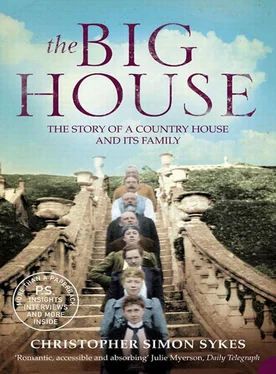
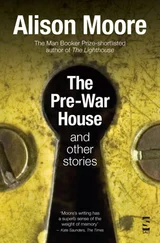

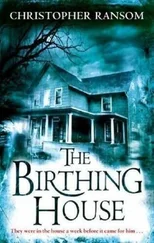



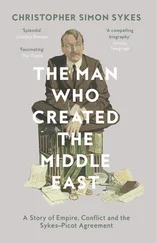

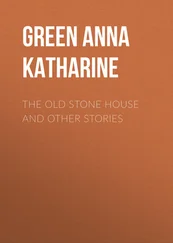


![Edward Ellis - Adrift on the Pacific - A Boys [sic] Story of the Sea and its Perils](/books/753342/edward-ellis-adrift-on-the-pacific-a-boys-sic-s-thumb.webp)